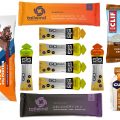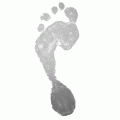In today’s world where big data reigns supreme and the Quantified Self movement promises self-knowledge through numbers, anything that can be measured often is. And if it can’t be measured today, the right technology is sure to be just around the corner.

In many ways, athletes have been at the forefront of this drive to measure and collect data about the self—at least when it comes to the physiological dimensions of athletic performance. From the stopwatch to the heart rate monitor to today’s GPS watches that include all of the above and much more, athletes now face an almost dizzying array of choices when it comes to measuring and tracking performance during training, racing, and daily activities. So if you feel bombarded by too many numbers, here are the ones to focus on first.
Below are what I consider to be a minimalist list of the most valuable metrics for triathletes. You can certainly add others to the list as your interests and motivations dictate, but what you see below represent the core data that can drive any successful training program, from novice to elite.
Basic Training Metrics
- Duration
- Distance
- Pace
Duration, distance, and pace represent the basic metrics for any endurance workout. Anyone can excel with a training program by simply using these three metrics. Before the advent of GPS devices, if you lacked one of the three you could still estimate the third. But now GPS training devices make it easy to have all three at your fingertips on the fly. Monitoring pace during a workout is a useful means to gauge the intensity at which you’re working. Recording duration and distance in your training log allows you to effectively track past training and design future training.
Additional Training Metrics
- Heart rate (run, bike)
- Cadence (run, bike)
- Strokes per length (swim)
Although pace can work well for measuring workout intensity, especially for swimming and running, heart rate adds precision to that task. Where terrain varies—and hence your pace varies without always matching intensity—heart rate can keep you focused on the training effect you are targeting. Looking at heart rate in relation to pace after a workout can also provide you with knowledge about your current state of fitness—namely, your aerobic decoupling rate (how much your heart rate drifts compared to your pace over the course of a long run).
Cadence can be easily tracked with today’s GPS devices for running and cycling, either with a cadence sensor accessory or with one of the latest devices with internal cadence sensors. The cadence you want to target is similar for both running and cycling. Think 90 revolutions per minute. For running, that means 90 right foot (or left foot) steps or 180 total steps. For cycling, that means 90 full turns of the cranks. Getting this feedback on the fly can help you adjust your form.
Although cadence is also important for swimming, strokes per length often represents a more useful number. The fewer strokes you take per length, the more efficient your stroke. Weak swimmers especially benefit by working to lower their strokes per length. Training devices now provide this metric without needing to do a manual count. Using this feedback can help you focus on form by giving you a number to lower.
Daily Recovery Metrics
- Morning heart rate
- Hours of sleep
There are two metrics worth paying attention to away from training sessions. Measuring your morning heart rate before you get out of bed provides a valuable window into your state of recovery. As I discuss in another article, “If your heart rate is five to ten beats higher than average on a given morning, this is a sign you may need more rest and recovery that day. It could also mean your body is fighting an oncoming virus, in which case eliminating stress in the form of hard training can give your body a chance to nip any sort of oncoming illness in the bud.” Likewise, keeping track of your sleep can provide insight into what is optimal for you given your activity level; you can then target your sleep accordingly.
Start Simple
To be sure, there are many additional metrics you could measure and track. Some might include power on the bike as a must have in the list above, and there is no dearth of ways to expand this list with today’s technology. But again, this list represents my minimalist set of the eight most valuable metrics. All you really need to successfully train for multisport events without breaking the bank or over complicating the process are at least the first three and ideally the full eight.
In a world where you can measure anything and everything, it is important to keep sight of the most valuable metrics that will guide you toward your goals. And even while harnessing the best of what today’s technology offers, there is a case to be made for keeping the process simple.







